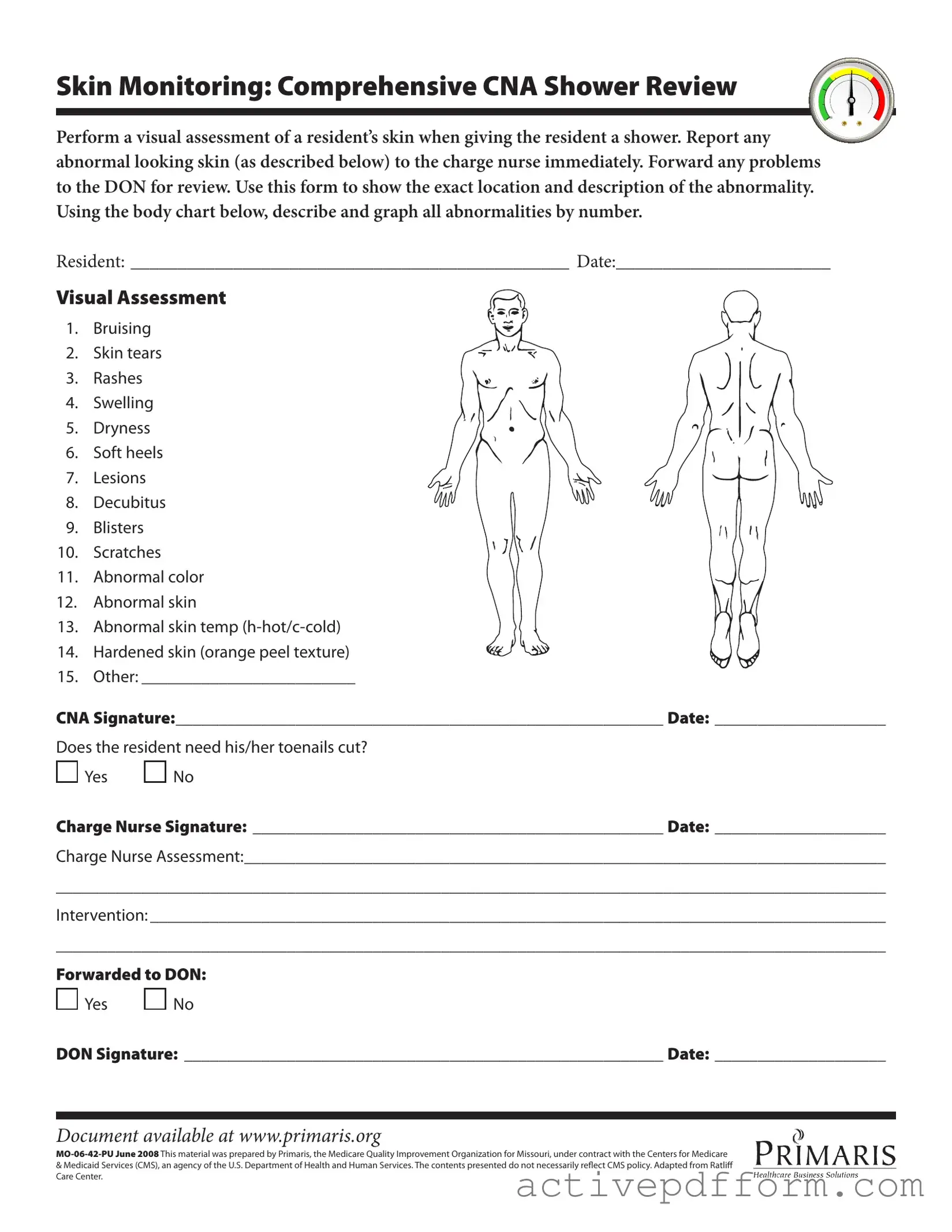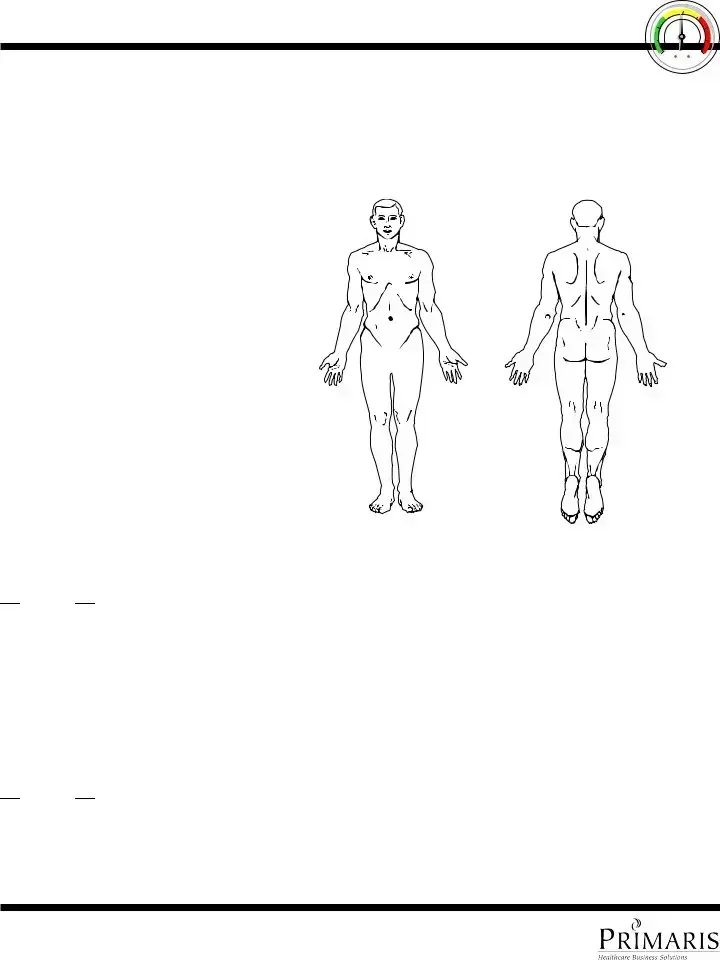What is the purpose of the CNA Shower Sheets form?
The CNA Shower Sheets form is designed to facilitate the visual assessment of a resident's skin during showering. It allows Certified Nursing Assistants (CNAs) to document any abnormalities they observe, ensuring that any issues are reported promptly to the charge nurse and subsequently reviewed by the Director of Nursing (DON).
What types of skin abnormalities should be reported?
CNAs should look for various skin abnormalities during their assessments. These include bruising, skin tears, rashes, swelling, dryness, soft heels, lesions, decubitus ulcers, blisters, scratches, abnormal color, abnormal skin texture, and abnormal skin temperature. Any of these findings should be documented on the form.
How should abnormalities be documented on the form?
Abnormalities should be documented by describing their exact location and providing a brief description. CNAs should use the body chart included in the form to graphically represent all abnormalities by numbering them. This visual representation aids in accurate reporting and follow-up.
What should be done if an abnormality is found?
If a CNA identifies any abnormal skin conditions, they must report these findings to the charge nurse immediately. The charge nurse will then assess the situation and determine the appropriate intervention. Any significant issues will be forwarded to the DON for further review.
Is there a section for documenting toenail care?
Yes, the form includes a section where CNAs can indicate whether the resident needs their toenails cut. This is an important aspect of personal care that can impact a resident's overall comfort and health.
What is the role of the charge nurse in this process?
The charge nurse is responsible for reviewing the CNA's findings and conducting their own assessment. They will document their observations on the form and decide on any necessary interventions. Their signature on the form indicates that they have completed this assessment.
What happens after the charge nurse assesses the resident?
After the charge nurse completes their assessment, they may implement interventions based on their findings. If necessary, they will forward the information to the DON for further evaluation. This ensures that all relevant parties are informed and can take appropriate action.
What does it mean if the form is forwarded to the DON?
If the form is marked as forwarded to the DON, it indicates that the charge nurse has identified issues that require additional review or intervention. This step is crucial for ensuring that serious conditions are monitored and addressed in a timely manner.
Where can I access the CNA Shower Sheets form?
The CNA Shower Sheets form is available online at www.primaris.org. It is important to use the most current version to ensure compliance with guidelines set forth by health authorities.
What should I do if I have questions about the form?
If you have questions about the CNA Shower Sheets form or its use, it is advisable to consult with your supervisor or the charge nurse. They can provide guidance and clarification on how to properly complete the form and address any specific concerns.



 Yes
Yes 
 No
No
 Yes
Yes 
 No
No